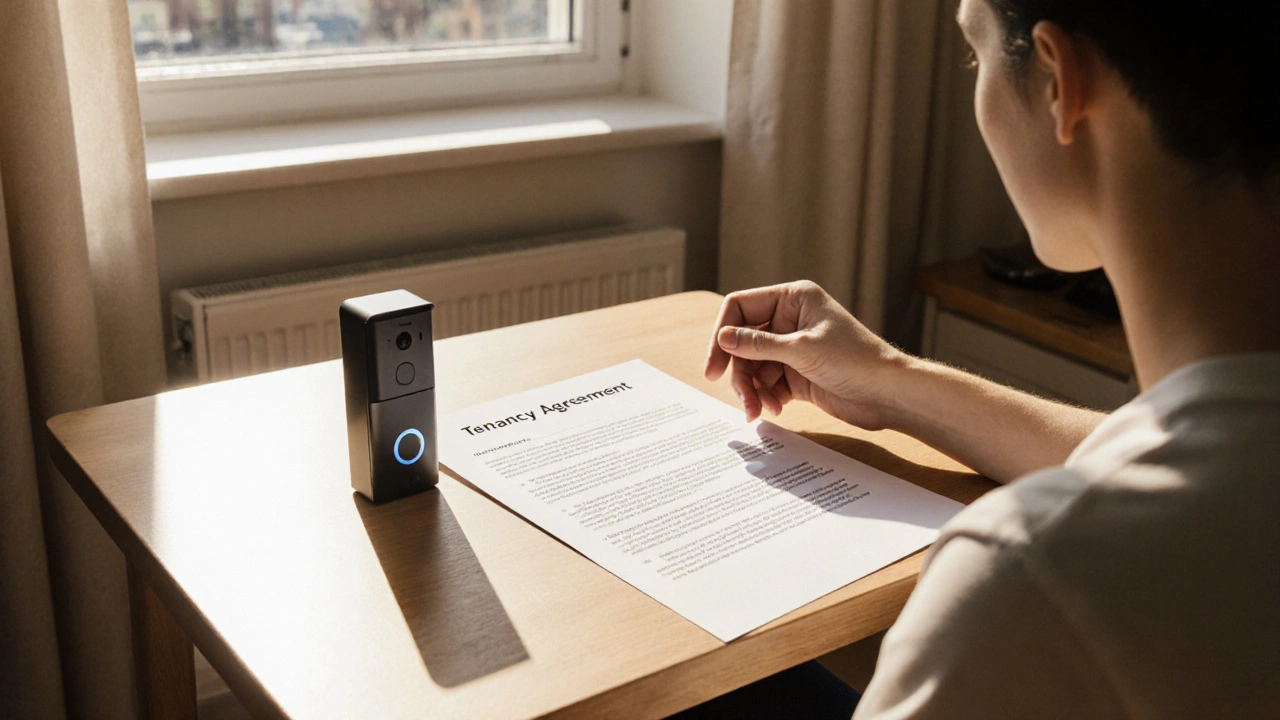When working with Tenancy Agreement Video Doorbell, the practice of installing a video doorbell in a rental property while balancing landlord duties and tenant rights. Also known as rental doorbell CCTV, it sits at the intersection of security tech and housing law. A typical video doorbell records the front‑door area and streams live video to a mobile app. A tenancy agreement is the legal contract that sets out what both landlord and tenant can expect during the tenancy.
First off, the law says a landlord can only make changes to a property that are listed in the tenancy agreement or get the tenant’s written consent. The UK’s Landlord and Tenant Act 1985 doesn’t forbid doorbell cameras, but it does require landlords to respect the tenant’s right to privacy under the Data Protection Act 2018. In practice, this means you need a clear clause that explains why the video doorbell is being installed, how footage will be stored, and who can view it. Tenancy Agreement Video Doorbell policies that spell out these details protect both parties from disputes down the line.
Privacy is the biggest hurdle for many renters. A video doorbell captures faces, license plates, and sometimes even package deliveries, creating a trove of personal data. Under GDPR, any recorded footage is considered personal data, so you must have a lawful basis to process it—usually consent or a legitimate interest claim. Most landlords choose to store footage on encrypted cloud services that meet UK data‑security standards. Tenants should be told how long the video is kept (often 30‑90 days) and how they can request deletion. Clear privacy notices built into the tenancy agreement keep the arrangement transparent and legally sound.
Installation isn’t as simple as sticking a device on the wall. Many video doorbells need a wired power source, especially the models that promise continuous recording. If the rental property doesn’t already have a doorbell transformer, a qualified electrician should do the work to meet Building Regulations and avoid voiding insurance. Battery‑powered units are easier to install but may need regular charging, which can be a hassle for tenants. Choosing the right power setup depends on the property’s wiring, the landlord’s budget, and the tenant’s willingness to maintain the device.
Cost is another factor that shapes the decision. A mid‑range wireless video doorbell in the UK costs between £80 and £150, while professional‑grade wired models can push £250. Installation fees add another £50‑£100 if an electrician is needed. However, the upside is real: studies from UK police forces show that visible doorbell cameras reduce burglary attempts by up to 30 %. Tenants also feel safer, which can improve tenant retention and justify a modest rent increase or a one‑off security deposit.
When picking a device, look for features that align with rental‑friendly use. Two‑way audio lets landlords communicate with visitors without opening the door, which is handy for letting in maintenance staff. Local storage (microSD) gives tenants control over their footage, while cloud storage offers remote access for landlords. Compatibility with popular smart‑home ecosystems (Google Home, Amazon Alexa) provides extra convenience but also raises the question of who controls the account. Ideally, the landlord creates a shared account with limited admin rights so the tenant can still view live video without changing security settings.
Putting the clause into the tenancy agreement is straightforward if you follow a template. Start with a short statement: “The landlord may install a video doorbell at the front entrance. The device will record video for security purposes only and store footage securely for a maximum of 60 days.” Follow with details on data handling, access rights, and the process for removal at the end of the tenancy. Both parties should sign the amendment and receive a copy. This written agreement creates a legal shield and sets clear expectations, making future conversations about the camera much smoother.
Below you’ll find a curated collection of articles that dive deeper into each of these areas—legal considerations, privacy best practices, installation guides, cost breakdowns, and product reviews. Whether you’re a landlord looking to boost security or a tenant curious about your rights, the posts ahead will give you practical steps and real‑world examples to help you make an informed decision.

Find out if a Ring Doorbell is legal in a UK flat, how tenancy agreements, GDPR and building rules affect installation, and the steps to get permission or choose alternatives.